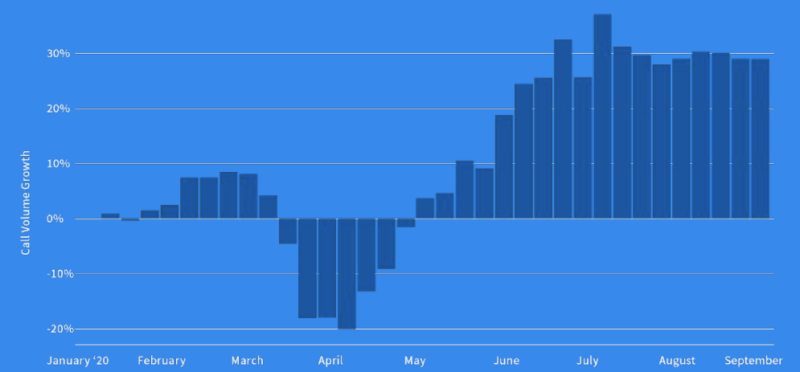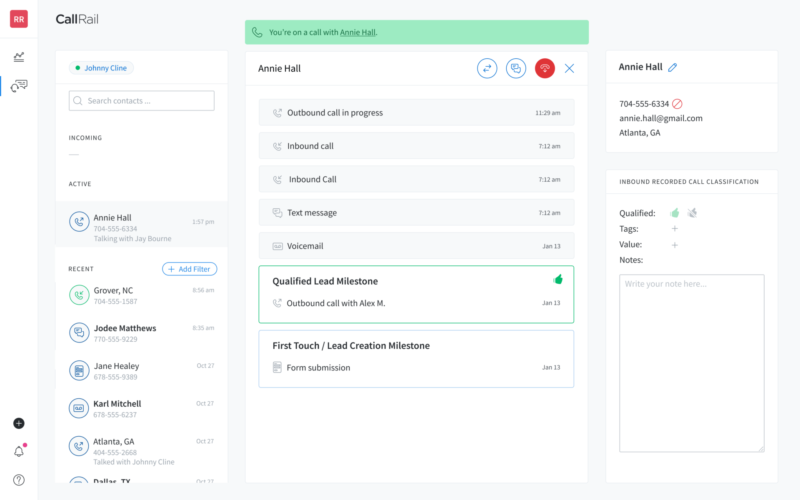When the COVID lockdowns began in March, Google local business profiles saw a massive drop-off in directions requests and a corresponding spike in local calls and website clicks (61% increase in calls). Since that time, call volumes fluctuated but, according to CallRail, have now stabilized at levels that are 27% higher than the pre-pandemic peak.
Small businesses (SMBs) as a group have historically not done a good job answering the phone and returning calls. A 2016 study of SMB phone activity found that only 38% of calls received a live answer; another roughly 38% were sent to voicemail and 24% received no response at all. Remarkably, the study found that 70% of businesses answered less than half of their calls.
Missed or unreturned calls means lost revenue. There’s a very real cost to this poor service. Research compiled by UK-based Aircall says that “roughly 85% of people whose calls are not answered will not call back” and almost 70% of people will stop dealing with a firm whose customer service is poor.
Total weekly call-volume growth

Missed or non-returned calls equal lost revenue for most SMBs. This is one reason that Google My Business is testing a 45 day call history log. It’s very basic and operates like the missed calls feature on smartphones. There’s no advanced functionality, analytics or call transcription.
Virtual contact center for SMBs. Considerably more sophisticated is CallRail’s new Lead Center. It takes the company’s call tracking and analytics tools and packages them up in a new softphone system and virtual contact center for SMBs. It also combines sales-enablement and CRM elements.
The company says it’s ideally for businesses with between 3 and 20 sales or customer service reps, and is intended to help them manage these COVID-related increased call volumes. It operates as a total replacement for a physical business phone system.
Call routing to any device. Calls can be routed to any device, whether mobile phones or computers; it doesn’t require a physical phone system. The platform relies on Call Rail’s call-tracking numbers to initiate or receive calls, with tracking numbers serving as outbound caller IDs. The system remembers which numbers are used by specific callers and chooses “the number used during the most recent interaction with any given customer” as the ID.
Lead Center dashboard customer interaction history

Not trying to be Salesforce. It doesn’t aspire to be a compete CRM system. But there are a range of interesting sales-enablement and marketing functions, including:
- Capturing the customer interaction history with the business
- Tracking the original marketing source or search keyword and most recent landing page visited before the customer initiated the call
- Any tags or notes from previous agent/employee interactions with the prospect
- Audio recording of all calls (or selective recording if preferred)
- Automatic creation of a searchable database of all contacts
Lead Center also captures form fills and text messages and integrates them into the contact’s record. Chat coming in Q1 2021.
Why we care. There are numerous competitors in the business contact center and VoIP phone (“cloud communications”) segments; among them, Vonage, Aircall, RingCentral and several others. CallRail is essentially entering a new market with this product. It seeks to help SMBs escape using spreadsheets to track customer interactions, improve the customer calling experience and ensure leads are more effectively pursued.
What’s most interesting for marketers is the ability to connect conventional call tracking, tied to specific media or marketing sources (including paid search campaigns or organic landing pages), to a sales-enablement tool designed for simplicity and aimed at relatively small companies.
About The Author
Greg Sterling is a Contributing Editor to Search Engine Land, a member of the programming team for SMX events and the VP, Market Insights at Uberall.
via https://AiUpNow.com October 29, 2020 at 03:42PM by Greg Sterling, Khareem Sudlow,
